Automatic tube bending machines are widely used in a variety of areas of application such as automotive, motorcycle, aerospace, furniture, industrial vehicles, and residential and industrial heating and cooling systems.
Unlike the traditional manual tube bending machines, mainly used as work tools on construction sites, automatic tube bending machines are real industrial systems for mass production of components made from tube and can be electric hydraulic, hereinafter simply called hydraulic tube bending machines, or all-electric.
This article describes the main advantages offered by the all-electric tube bending machines.
Main advantages of an electric tube bending machine
The main advantages of an an all-electric tube bending machine are:
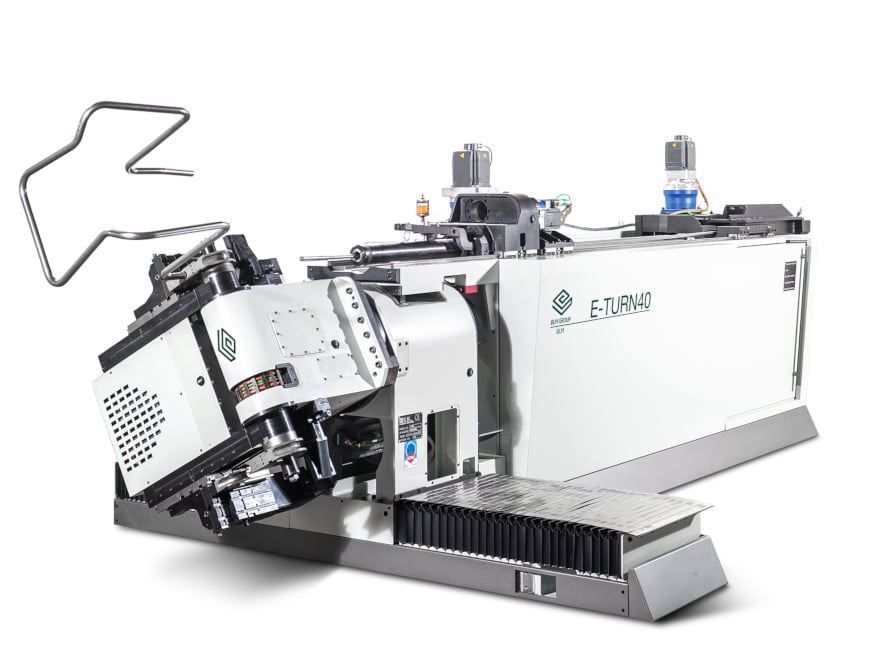 Example of an all-electric tube bending machine that can perform in-process right-hand/left-hand bending.
Example of an all-electric tube bending machine that can perform in-process right-hand/left-hand bending.
1. Production flexibility
Today’s market is witness to two important phenomena that have contributed over the years to a progressive reduction in production batches: the growing demand for product customization and the ever-increasing push towards technology innovation.
Abandonment of mass production for “make to order” production began many years ago and has been a strong driver in the development of increasingly flexible systems, that is machine tools that can be rapidly reprogrammed and arranged for a new part.
Why an all-electric tube bending machine is faster in production changeover?
An all-electric tube bending machine eliminates manual adjustments usually necessary on other types of tube bending machines such as: adjustment of the clamp die, pressure die and mandrel position or of the clamp die pressure on the tube.
With the possibility to electrically control the machine’s movements, all the setting operations can be carried out automatically by the machine programming software at each production changeover rather than manually by the operator, as is the case with hydraulic tube bending machines.
As no manual adjustments are needed there is no risk of error and even a less experienced operator can work proficiently without interruption.
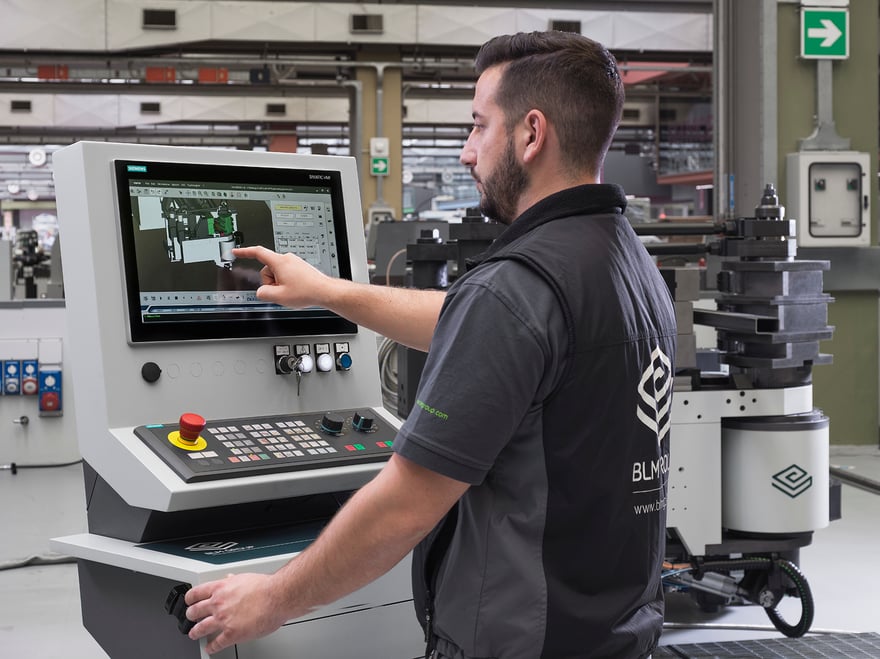 An all-electric tube bending machine eliminates manual adjustments usually necessary on other types of tube bending machines such as: adjustments of the clamp position, of pressure die and mandrel or of clamping pressure on tube.
An all-electric tube bending machine eliminates manual adjustments usually necessary on other types of tube bending machines such as: adjustments of the clamp position, of pressure die and mandrel or of clamping pressure on tube.
2. Repeatability
First of all, a distinction should be made between accuracy and repeatability in the bending process.
Accuracy is how exactly the machine moves the equipment components and its mechanical parts to the desired position. In an all-electric tube bending machine, the degree of accuracy is represented by the accuracy of the movement of the machine’s electrical axes which is about a hundredth of a millimetre and also an accuracy factor intrinsic to the system.
However, due to elongation and springback of the tube during bending, this “theoretical” accuracy is not necessarily representative of the part final accuracy as it could be, for example, in a tool machine.
Therefore, for the manufacturer, the most important factor in tube bending is repeatability, that is the degree of consistency among the measurements of the part across the entire batch.
For example, in a sector such as Automotive, where mass production is almost completely automated, it is impossible to carry out manual adjustments or correction of a non-conforming part during assembly. In this case the repeatability of a batch is essential to maintain profitability and avoid waste.
How does the all-electric tube bending machine offer a greater repeatability of produced parts?
The greatest advantage of an all-electric tube bending machine consists of the simplicity to obtain the desired accuracy and to replicate this result consistently time over time. In fact, an electric tube bending machine can record the axis coordinates and tube bending parameters, recalling them at any moment.
As previously stated, all-electric tube bending machines do not need any manual adjustment therefore the machine may recall the set-up of the parameters previously recorded to produce the same part from the past or today at any moment in future and work it in the same way.
Using an all-electric tube bending machine also eliminates human error and allows the manufacturer to obtain the same results of yesterday for today and tomorrow without the need of an expert operator capable of restoring the machine to the same conditions used in the past.
A particularly representative example is shown by the part in the figure below: a complex element for the furniture sector, with fixed and variable radius bends. Here, the electrical settings are essential to reproduce the part over time, regardless of operator experience.
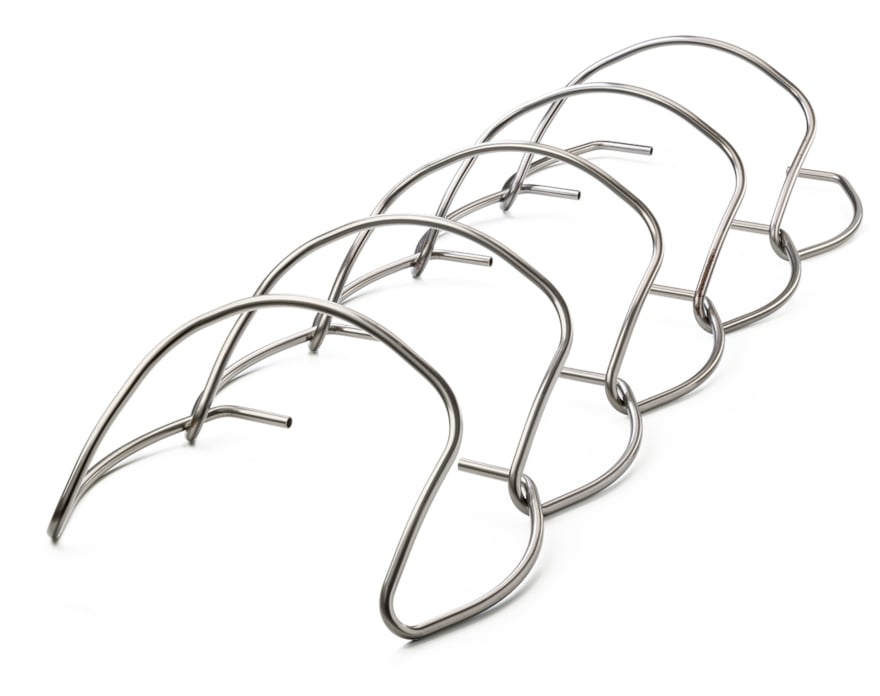 Elements of a design chair obtained with E-TURN: all-electric tube bending machine with right-hand/left-hand bending in single cycle by BLM GROUP.
Elements of a design chair obtained with E-TURN: all-electric tube bending machine with right-hand/left-hand bending in single cycle by BLM GROUP.
3. Production rate
In industrial sectors where a high productivity must be ensured, movement interpolation and smoothness of the bending head detachment from the bent tube in preparation for the next bend are extremely important.
Why is it simpler to optimize the work cycle in an all-electric tube bending machine?
The all-electric tube bending machines movement is controlled by a CNC axis allowing for the full potential of the tube bending machine programming software to be fully utilized in creating bending cycles that optimize movements based on the part being produced. As a result, the release movements from the tube can be smoother and faster, to the great advantage of the final cycle time.
In the video below you can see the bending cycle optimization at work on the sinuous movement of E-TURN, a right-handed / left-handed in single cycle tube bending machine produced by BLM GROUP, working on a furniture element.
4. Quality
Tube behaviour is different during bending depending on material and thickness. Therefore, a constant clamping force during the whole machining process may cause marking or crushing in some parts or, when materials are more resistant and tubes have a high diameter and thickness, it may not be sufficient to carry out the bend.
In hydraulic tube bending machines, the force exerted on the tube by the clamp die is constant during the entire process because it is directly proportional to the oil pressure in the hydraulic circuit.
Why is it simpler to obtain high aesthetic finishing bends on an all-electric tube bending machine?
An all-electric tube bending machine can modulate the force exerted by the various electrical axes in process depending on the tube being bend. Both for thin or thick tubes, ductile or hard material, this type of tube bending machine can properly manage the force exerted, modifying it as needed in process.
This not only considerably improves the quality of the completed parts, but also has the great advantage of reducing the stress on the machine’s components, thereby increasing the system life and decreasing wear of its components.
In a BLM GROUP all-electric tube bending machine the programming software of the machine controls the various equipment components and allows the operator to activate or deactivate specific process functions that automatically optimize the technological parameters of tube bending.
Therefore, the machine is able to use the correct force to bend very thick as well as thin tubes, as delicate as copper or aluminium capillary tubes, without causing imperfections.
 Aluminium serpentine made with all-electric tube bending machine, 4-RUNNER H1.
Aluminium serpentine made with all-electric tube bending machine, 4-RUNNER H1.
5. No transition periods
In terms of productivity and flexibility, it is very important to rely on a system that can work optimally from the start and independently from environmental conditions such as temperature and humidity.
In hydraulic tube bending machines, for example, the oil temperature directly affects its viscosity and therefore the machine’s working conditions.
A higher oil viscosity causes slower movements and overheating therefore this adversely affects the final accuracy of the bend because metallic materials tend to behave differently (different springback) in direct response to the bending speeds they are subjected to.
Oil viscosity varies in relation to the machine working temperature and the environmental temperature which changes not only seasonally but also throughout the day; therefore, it is difficult to keep a constant bending speed. A machine with “cold oil” (beginning of day) will give a different result from that with “hot oil” (end of day).
This production reality must be managed by an operator with the proper experience to manually adjust the bending parameters throughout the transition periods, so that an acceptable repeatability of produced parts is ensured.
All-electric tube bending machines are not affected by environmental conditions and are immediately ready to work 100%.
All-electric tube bending machines do not have hydraulic oil to heat up and their electric drivers have the same behaviour regardless of temperature or thermal shocks.
So, there are no “transition periods”, defined as time intervals in which the machine working conditions change, and therefore the results are the same throughout the production.
6. Lower energy consumption
Today, rising energy prices, caused by the current pandemic impact but above all by the global need to reduce emissions, are forcing manufactures to carefully manage their energy consumption.
How and how much energy can be saved with the all-electric tube bending machines?
The only motors of the all-electric tube bending machines that use energy are those that are actually moving, so power usage depends on the effort exerted on the machine in that exact moment. Therefore, energy consumption takes place only when needed resulting in considerable cost savings for the manufacturer.
The BLM GROUP tube bending machines provide another advantage in that they are able to retrieve the energy during the axis deceleration phase, accumulate it then reusing it in the most demanding phases of the bending process. As a result, in addition to saving energy it is also possible to reduce the consumption peaks.
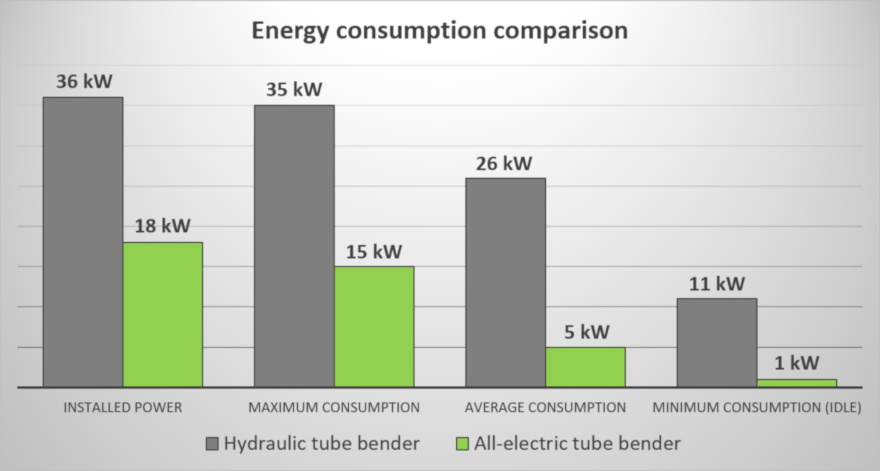 Comparison of the main energy consumption values between an all-electric tube bending machine and a hydraulic tube bending machine for the same tube.
Comparison of the main energy consumption values between an all-electric tube bending machine and a hydraulic tube bending machine for the same tube.
7. Clean work environment
A clean and healthy work environment has a positive impact not only on the cost for cleaning the workshop but also on safety, morale and the well-being of the workers.
Hydraulic machines are commonly subject to oil leaks within the flanges and fittings of the hydraulic system as well as in the seals which deteriorate over time.
Frequently these leaks which make the machine and the floor dirty with oil, are topped up by manually adding hydraulic oil that may cause drippings and dirt as well as environmental pollution.
An electric tube bending machine keeps the work environment clean.
Problem solved, oil is completely absent in the all-electric tube bending machines: the work environment is therefore cleaner and healthier.
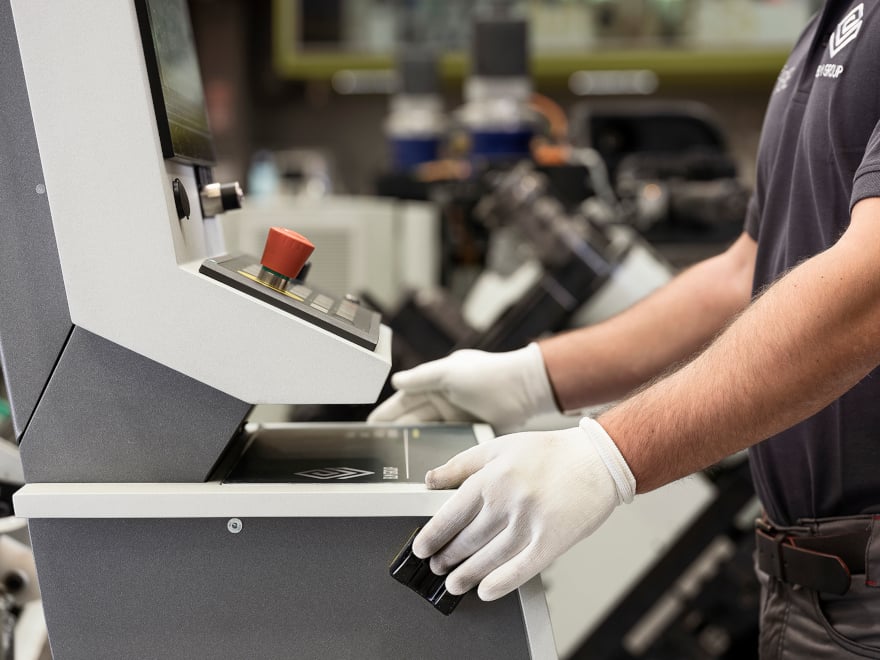 An all-electric tube bending machine keeps the work environment clean.
An all-electric tube bending machine keeps the work environment clean.
8. Reliability
In today’s market, reliability of a production systems is an essential requirement to maximize the effective working time and the OEE.
Besides the quality of the components with which the tube bending machine is built, also the type of technology used implies a significant difference in terms of system reliability and speed with which possible problems are solved.
Why an all-electric tube bending machine is more reliable and maintenance is simpler and quicker?
All the operations concerning oil change and top-up, filter and seal replacement and checking possible leakages are not present in the electric tube bending machines.
Furthermore, all the information about axis management including any anomalies pass through the CNC in the modern all-electric tube bending machines so in cases of malfunction, the information can be sent directly to the parent company for rapid and efficient maintenance intervention remotely.
The possibility of malfunction in an all-electrical machine is much lower or even nil compared to a hydraulic machine, both because hydraulic system faults are eliminated (such as leakages, seal, valve breakage, etc.), and because there are no input and output boards, piston limit switches and relevant cables for the signals; all of these components being the main cause of failure in a traditional tube bending machine.
Conclusions
BLM GROUP has been producing all-electric tube bending machines for more than 15 years and is able to offer a wide range of systems suitable for a wide variety of areas of application: tube bending machines with right-handed or left-handed bending direction or right-handed and left-handed in the same work cycle, but also systems for bending tubes from coil with and without mandrel.
Performance, reliability, flexibility and simple use and programming are characteristics that the BLM GROUP has developed over the years and that today is able to ensure on its entire range of all rigorously all-electric tube bending machines.



